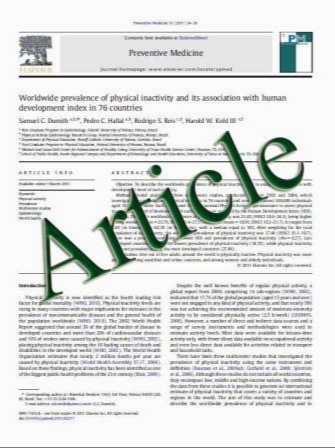Combination of vascular endothelial growth factor receptor/ platelet-derived growth factor receptor inhibition markedly improves the antiangiogenic efficacy for advanced stage mouse corneal neovascularization
- نوع فایل : کتاب
- زبان : انگلیسی
- مؤلف : Zhang Chaoran & Lin Zhirong & Xu Gezhi
- چاپ و سال / کشور: 2011
Description
Purpose Pericytes, which are recruited to vessels via platelet-derived growth factor (PDGF), are linked to vessel formation and stabilization during pathological corneal neovascularization. In advanced stage, maturated vessels are restricted to anti-VEGF therapy. This study was undertaken to investigate the potential anti-angiogenesis effect of PDGF receptor inhibitor and the therapeutic effect of simultaneously targeting VEGF/PDGF signaling in advanced stage mouse corneal neovascularization. Method Corneal neovascularization was induced in wild-type BALB/C mice by removal of the corneal and limbal epithelia. To study the effects of anti-angiogenic inhibitor on new vessel growth prevention, mice were treated with VEGF receptor tyrosin kinase inhibitor II(anti-VEGF/VEGFR group) for 10 days immediately following injury at day 0 (D0). To study the effects of anti-angiogenic inhibitors on vessel regression, mice were treated with VEGF receptor tyrosin kinase inhibitor II or PDGF receptor inhibitor AG 1296 (anti-PDGF/PDGFR group) or both (combined group) for 10 days starting at day 10 (D10) post-injury. Corneas were harvested and immunostained with CD31 for endothelial cells and Ng2 for pericytes. Threshold analysis was used to calculate the area of corneal new vessels. Corneal flatmounts were studied under fluorescence microscope and confocal microscope. Results Mice treated with the VEGF receptor tyrosin kinase inhibitor II from D0 showed an inhibition of corneal neovascularization of 15.4% compared with untreated animals (P<0.01). But the same amount of VEGF receptor tyrosin kinase inhibitor II had no significant anti-angiogenic effect when used at D10 (P>0.05). Mice treated with either AG1296 or AG1296 plus VEGF receptor tyrosin kinase inhibitor II at D10 showed an inhibition of corneal neovascularization of 12.59% (P<0.05) and 20.85% (P<0.01) respectively. Decreased pericyte coverage and vessel density was observed in AG1296 group. Compared to the anti- VEGF/VEGFR group, only the combined therapy group showed a significant anti-angiogenesis effect (P<0.01). Conclusion Inhibition of the PDGF signal pathway results in loss of pericytes and a reduction in vessel density in advanced stage mouse corneal neovascularization. Furthermore, pericyte attenuation caused by blockade PDGF signaling can enhance the anti-angiogenesis efficacy of VEGF receptor inhibitor. Combined treatment against both endothelial cells and pericytes is required for advanced stage corneal new vessels.
Graefes Arch Clin Exp Ophthalmol DOI 10.1007/s00417-011-1709-6 Received: 8 February 2011 / Revised: 25 March 2011 / Accepted: 6 April 2011


